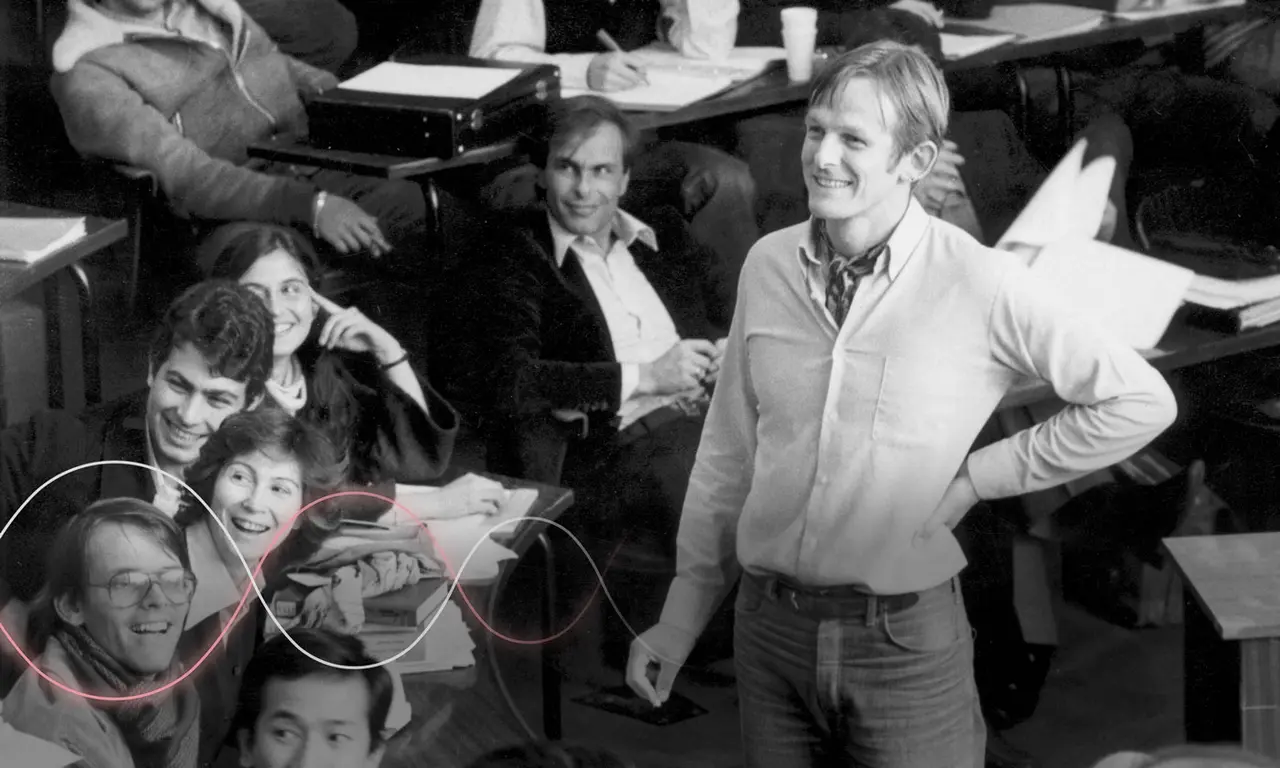
After proving to be a revolutionary academic institution, INSEAD embarked on the challenge of expansion. Complete independence placed INSEAD on a financial high wire without the safety net of a university, governmental aid or external association.
This independence empowered INSEAD to stretch in unprecedented ways – the efforts financed expansion of the entire educational programme and its scope. INSEAD welcomed more students and participants, increased the faculty size and funded new campus development. The school grew while creating new perspectives, possibilities and templates of business education. Necessity bred both planned and spontaneous innovation.
Strong pillars supported the impressive growth. As Chairman of the Board, John H. Loudon, former chairman of the industrial giant Royal Dutch Shell, attracted a new generation of board members. These leaders came from the highest echelons of international business and brought new perspectives to INSEAD. A new Executive Committee oversaw development of long-term plans for growth.
Staying close to business, the school embarked on bold executive engagement and in 1972 launched the Management Development Unit, or MDU. This strengthened relationships between professors and business while advancing executive education in Europe.
As the decade progressed, the school looked to expand influence, with executive programmes for Asia. By 1974, the school had launched the first programme to prepare European managers to work with Japanese businesses, followed by a curriculum for Japanese managers.
In the second half of the decade, expansion continued apace. In 1976, a research committee was formed and professors were given time and resources to pursue research. This investment brought balance to academic priorities and opened the door for INSEAD to lead in knowledge creation. That year, the newly established Alumni Fund and new endowed chairs opened avenues to support the school.
National committees were formed in key countries to support fundraising and promote the school in business and academic communities. This support allowed INSEAD to push for more diversity in terms of gender and geography. With independence as a core value and with growing community involvement, the school kept pace with developments in international business and politics.
1970
Students relax on campus during a much-needed break between classes

Centre Européen d’Education Permanente (CEDEP) established

1971
INSEAD permanent faculty grows to 31, doubling in 18 months.
Dean Berry appointed first Dean of INSEAD, places focus on raising academic standards through faculty recruitment and research development

Completion of North Wing, enabling expansion of the school

Claude Janssen (right) appointed first Executive Vice-Chairman of the Board, marking the founder’s return to INSEAD governance

1972
Launch of world’s first company specific executive education programme
Launch of the Management Development Unit, with Claude Rameau appointed Director

1974
Pierre Cailliau appointed Director General, ushering in an era of capable leadership and structural change that would ultimately end the Director General position and strengthen INSEAD governance as an academic institution

Jacqueline Tourlier-Pope appointed first Director of Development, following years of dedicated service in charge of personnel and administration

First executive education programme to prepare European managers to work in Asia

1975
International Woman’s Year and European Council directives underscore the need to increase gender diversity in business

Students brave the Fontainebleau rain walking to class

1976
Research Committee established as part of academic investment
Board approves creation of the Euro-Asia Centre, with Henri-Claude de Bettignies (far left) named Director and Washington Sycip (standing) joining later as Chairman

Launch of the INSEAD Alumni Fund by Michel Gauthier MBA’61 (centre) to reinforce the distinctive character of the MBA programme

Uwe Kitzinger appointed Dean of INSEAD, promising to turn INSEAD into a whole management institute by improving research capabilities

1977
First 5 National Committees formed in West Germany, France, Britain, the Netherlands and the US
Launch of first development campaign, an early fundraising effort to support ambitious growth

1978
Noted economist Edith Penrose becomes first female professor to join the faculty and later becomes the first woman appointed to a deanship

1979
First endowed Professorial Chair established
Claude Rameau MBA’62 appointed Dean of INSEAD, pioneering a co-dean leadership model and providing strategic stability for the next 13 years

President of the European Commission Roy Jenkins (left) joins Uwe Kitzinger to open two new buildings on the Europe Campus – Residences and restaurant



